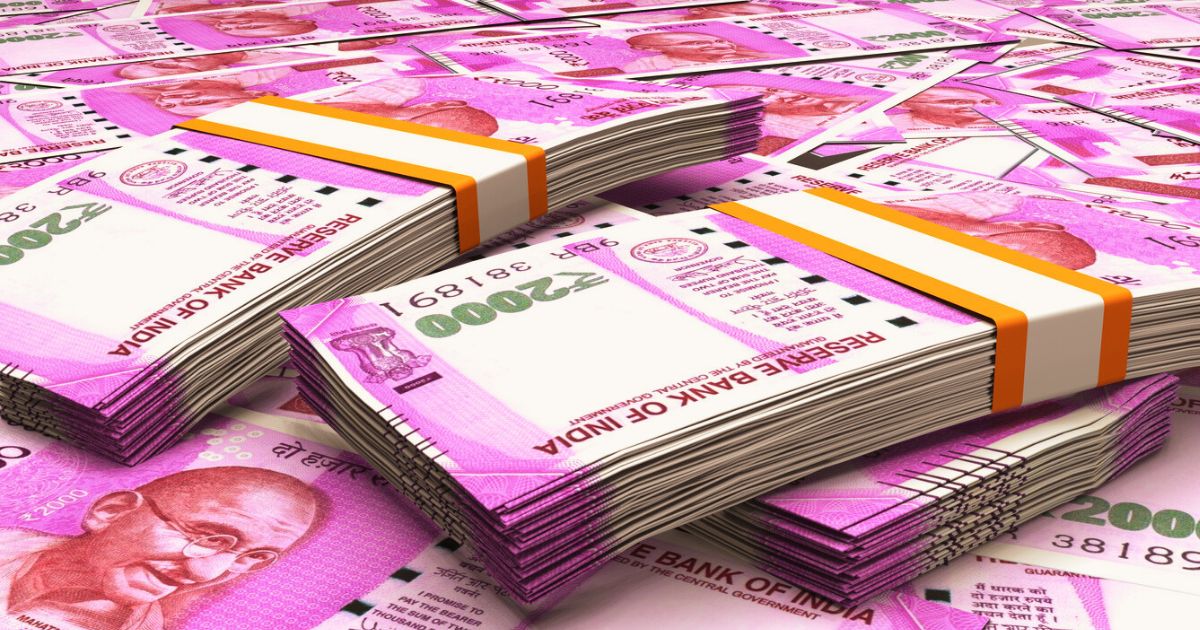In my opinion, the ₹2,000/- currency note will always be remembered as a symbol of Narendra Modi’s most damning damage to the Indian economy. It is disheartening to witness how this particular denomination became a convenient instrument for corrupt bureaucrats and ministers to engage in shady transactions and accumulate black money.
The introduction of the ₹2,000/- note was meant to address issues such as counterfeit currency and promote a cashless economy. However, it appears that these intentions were overshadowed by the unintended consequences it brought. Instead of curbing corruption, it provided an easy avenue for those involved in illicit activities to hoard unaccounted wealth in cash.
The high value of the note made it an attractive choice for stacking black money, undermining the government’s efforts to eradicate financial malpractices. It became a symbol of the deep-rooted challenges faced by the Indian economy, reinforcing the perception of a system plagued by corruption and cronyism.
Furthermore, the introduction of the ₹2,000/- note failed to address the core issues plaguing the economy. It did not bring about the desired transformation towards a more transparent and inclusive financial system. Instead, it served as a stark reminder of the loopholes and shortcomings within our governance.
It is essential for the government to acknowledge the damaging impact of this currency note and take the necessary steps to rectify the situation. Comprehensive reforms strengthened regulatory mechanisms, and a renewed focus on transparency is crucial to restoring faith in the Indian economy and rebuilding its reputation.
In a significant step towards financial reform, the Reserve Bank of India (RBI) has recently announced the withdrawal of the ₹2,000 note. This decision holds the potential to reshape the Indian economy and address some of the challenges associated with black money, corruption, and illicit transactions.
By examining the reasons behind this move and its potential impact, we can better understand the implications for the nation’s economic landscape.
Page Index
Reasons for the Withdrawl
The withdrawal of the ₹2,000 note stems from various compelling reasons. Firstly, this high-value denomination had been widely misused for illegal activities, making it a convenient tool for hoarding unaccounted wealth.
The note became synonymous with black money transactions, impeding the government’s efforts to promote transparency and curb corruption.
Additionally, the large denomination facilitated the stacking of cash, making it easier for criminals and corrupt elements to carry out illicit transactions without leaving a financial trail.
Impact on the Indian Economy
The withdrawal of the ₹2,000 note is expected to have several positive impacts on the Indian economy. It will serve as a deterrent to those engaged in illicit activities, reducing the circulation of unaccounted cash.
This move will likely encourage the transition towards a cashless society, promoting digital transactions and formalizing the economy. Moreover, it will create a more transparent financial ecosystem, bolstering trust in the banking system and reducing the scope for corruption.
Addressing Counterfeit Currency
Another crucial aspect of the withdrawal is its potential to address the issue of counterfeit currency. The ₹2,000 note had been a target for counterfeiters due to its high value, causing financial losses and undermining the integrity of the currency.
By phasing out this denomination, the RBI aims to strengthen the security of the Indian currency, making it more resilient against counterfeiting and safeguarding the financial interests of citizens.
Ensuring a Smooth Transition
The RBI is well aware of the challenges that might arise from this withdrawal, particularly concerning the availability of smaller denominations for day-to-day transactions.
To mitigate any inconvenience to the public, the central bank has assured the timely supply of alternative denominations, ensuring a smooth transition.
Additionally, efforts are being made to promote digital payment options and expand the reach of banking services to facilitate the adoption of a cashless ecosystem.


